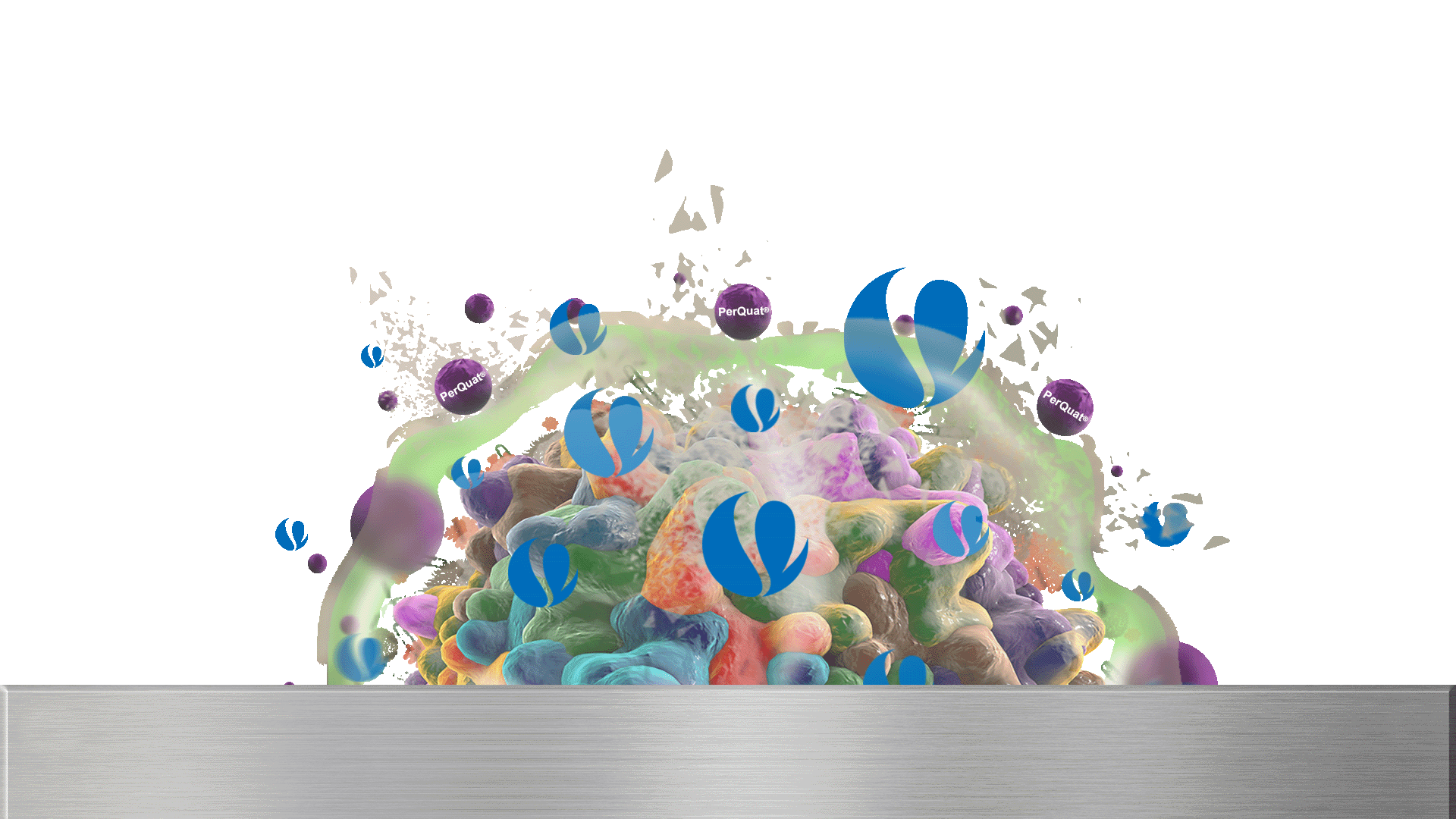What Are Biofilms?
The best way to protect against biofilms is prevent their formation.
Biofilms are smart and resistant.
Biofilms protect microorganisms from disinfection and allows pathogens injured by environmental stress and disinfectants to recover and grow. It can require up to 1,000x the normal dose of a commercial sanitizer to remove a biofilm Bacteria can repopulate within a biofilm within 48 hours if not properly removed.
Why do Biofilms Matter
Failure to eliminate and remove biofilms can lead to significant human health and operational challenges. Biofilms, the natural habitat for microorganisms, impact daily life by harboring dangerous pathogens, bacteria and viruses.
Biofilms also cause billons in economic damage through energy loss, equipment damage and product contamination — placing brands and consumers at risk for a foodborne disease outbreak.
The Sterilex Difference
Sterilex patented PerQuat technology was the first chemistry to receive EPA-registered anti-biofilm claims for industrial and public health use sites, including animal drinking lines.
EPA Registered
Sterilex PerQuat liquid disinfectants are the only products on the market approved by the EPA to kill biofilm bacteria AND remove biofilm.
Patented Chemistry
Dual active ingredients give Sterilex disinfectants their unique biofilm efficacy properties and provides a powerful level of performance through multiple physical and chemical mechanisms of action.
Continued Protection
If not fully removed, biofilms can repopulate within 48 hours. Continued use of Sterilex PerQuat products helps ensure a system is fully clean by controlling biofilm, seeding dispersal and system seeding.
Reach Harborage Niches
PerQuat foaming chemistry fills to reach all impossible-to-reach places.
Collapse Biofilm Matrix
Combination chemistry penetrates and collapses EPS structure to breakdown and wash away biofilms.
Kills biofilm bacteria
Kills up to 99.9999% of bacteria in biofilms
Related Resources for Biofilm
Operational Benefits of Biofilm control
Reduced recall risk
Protect food processing plant assets: both product and equipment
Reduced downtime and holds due to product contamination
Reduce labor needs by reducing scrubbing and recleaning
Reduce water needs by reducing recleaning
Extend shelf life by controlling spoilage organisms

Resources & Media
Explore our blog, white papers, case studies, and more for more in-depth information and insights.